Use these resources to implement just-in-time fixes and build accessibility best practices.
FIND
Quickly scan your online course and receive an accessibility report to guide your fixes.
FIX
Apply accessibility quick-tips to your online course modules, document uploads, and lectures.
MAKE
Streamline your routine with accessibility principles that improve the learning experience for every student.
FIND
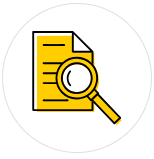
FIND
You can quickly scan your online course content by clicking on Ally Course Accessibility Report in your ICON course navigation menu. With the Anthology Ally tool, students can download course content in alternative formats, like audio versions of Word files, to suit their individual learning preferences.
Instructor and student help guides for Ally can be found on the Office of Teaching, Learning, and Technology (OTLT) Anthology Ally website.
Need to clean out old course content?
OTLT provides a tool in ICON called TidyUP to quickly identify and remove content in ICON that you’re no longer using. This can significantly improve your Ally Accessibility Report score!
Low Accessibility Score?
PDFs are one of the largest and most consistent accessibility issues in ICON courses, but you can easily fix your course’s PDFs (and watch your Ally score improve!) with help from a Student Instructional Technology Assistant (SITA). Request a consultation with a SITA today!
FIX: ICON Accessibility Quick-Tips
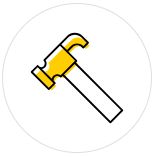
FIX
Below you will find quick-tips on remediating accessibility in ICON modules, document uploads, and your recorded lectures. You can implement the following tips today. Use the links below for instructions to integrate accessibility principles into your ICON workflow.
FIX: Modules
The ICON Rich Content Editor (RCE) tool enables you to add text, hyperlinks and images to screens in your online course.
RCE Sections
Headings
Use the built-in heading styles to provide visual clarity for all students, and aid those navigating your content with assistive tools.

Links
Increase the readability of your ICON screens with descriptive hyperlinks to course materials. First write out the link’s purpose and destination on your ICON screen (i.e.: summary of mitosis stages). Then highlight this text. Lastly, use one of the following tools:
- Document link (i.e.: course files you have uploaded)
- Course link (i.e.: assignments, module items, etc.)
- External link (i.e.: websites outside of ICON)

Images (Alternative Text)
Use the Image Options function to write out any text in your images and describe visual imagery in the context of your content.

Bullet Points/Lists
The RCE List function helps you quickly group and format lines of text to aid readability and speed up editing.

Uploads
FIX: Document Uploads
Accessibility@Iowa's Quick Guide to Document Accessibility provides step by step guidance for using built-in tools inside Microsoft Office 365 and Adobe Acrobat. Download it today!
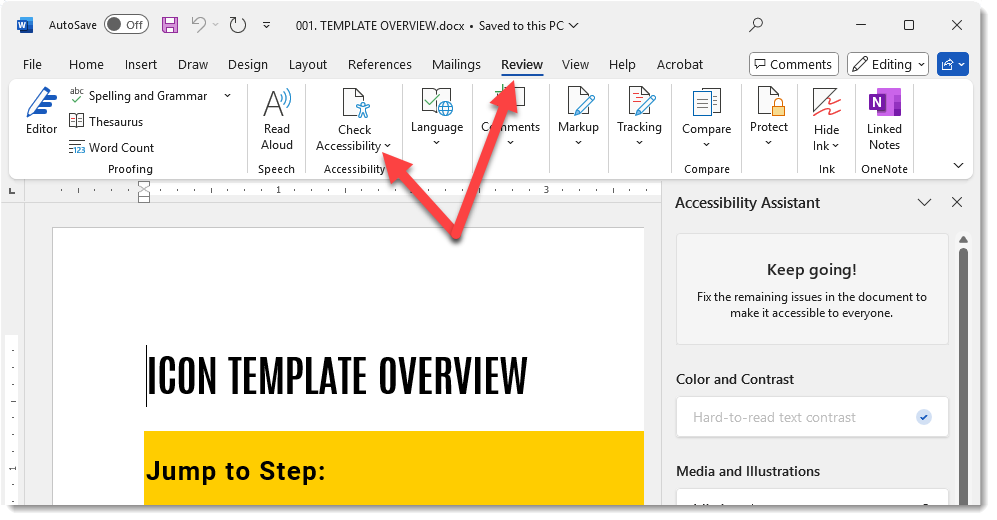
Recorded Lectures
FIX: Recorded Lectures
Your videos that are uploaded to UICapture are automatically captioned, but you may need to open the video editor and correct automatic captioning for discipline-specific terms and names/titles.
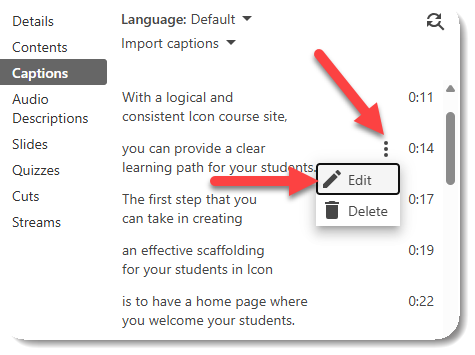
MAKE: Core Accessibility Principles
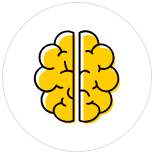
MAKE
Adapted from Accessibility@Iowa Digital Accessibility: 11 Things You Can Do
Build accessibility into your routine as you aim to make your content effective for all students, whether or not they have academic accommodations from Student Disability Services. The Distance and Online Education (DOE) ICON Template follows accessibility best practices and is a starting point to help you make accessibility part of your standard practice to create usable and consistent course content.
Headings
Organize your ICON screens and course documents using built-in heading styles to provide visual clarity to all students and aid those navigating your content with assistive tools.
Hyperlinks
Ensure your hyperlinks don’t detract from the readability of your content. Avoid using the website address as your hyperlink. Additionally, a “click here” hyperlink is not accessible. Hyperlinks should be descriptive using real-world language that indicates the link’s purpose and destination.
Images (Alternative Text)
Images that you upload to ICON and copy into your documents are made accessible to students when assistive tools referred to as “screen readers” scan the Alternative (ALT) Text you have created. Use built-in tools to write out any text inside your images and describe visual imagery in the context of your content.
Multimedia (Audio / Video)
Increase your online teaching presence through recorded lecture videos, webcam recordings in your weekly course announcements, and screen recordings that introduce assignment requirements and provide detail for your assignment feedback. The UICapture tool inside ICON automatically captions your video recordings, but may require updating to correct wording of discipline-specific terms and names or titles.
Read more about captions and transcripts
Color Contrast
Color contrast refers to the difference between the lightness and darkness of background and foreground elements in your content. When personalizing your content with custom colors, make sure to double-check the contrast to ensure readability for low-vision or color-blind users.
Bullet Points / Lists
Use the built-in editing tools in ICON and Microsoft Word/PowerPoint to create bulleted or numbered lists rather than typing out A. B. C. or 1. 2. 3. in your course content.
Read more about accessible lists
Tables
Data in your course content is often displayed using tables with columns, rows, and cells. Make sure you have included headers and descriptive captions to your tables so they are readable for students. Avoid using tables to control your page layout because assistive tools will not be able to read content to students in the same order as it appears visually onscreen.
Explore Further
Accessiblity@Iowa provides information and resources for everyone engaging with the University of Iowa

